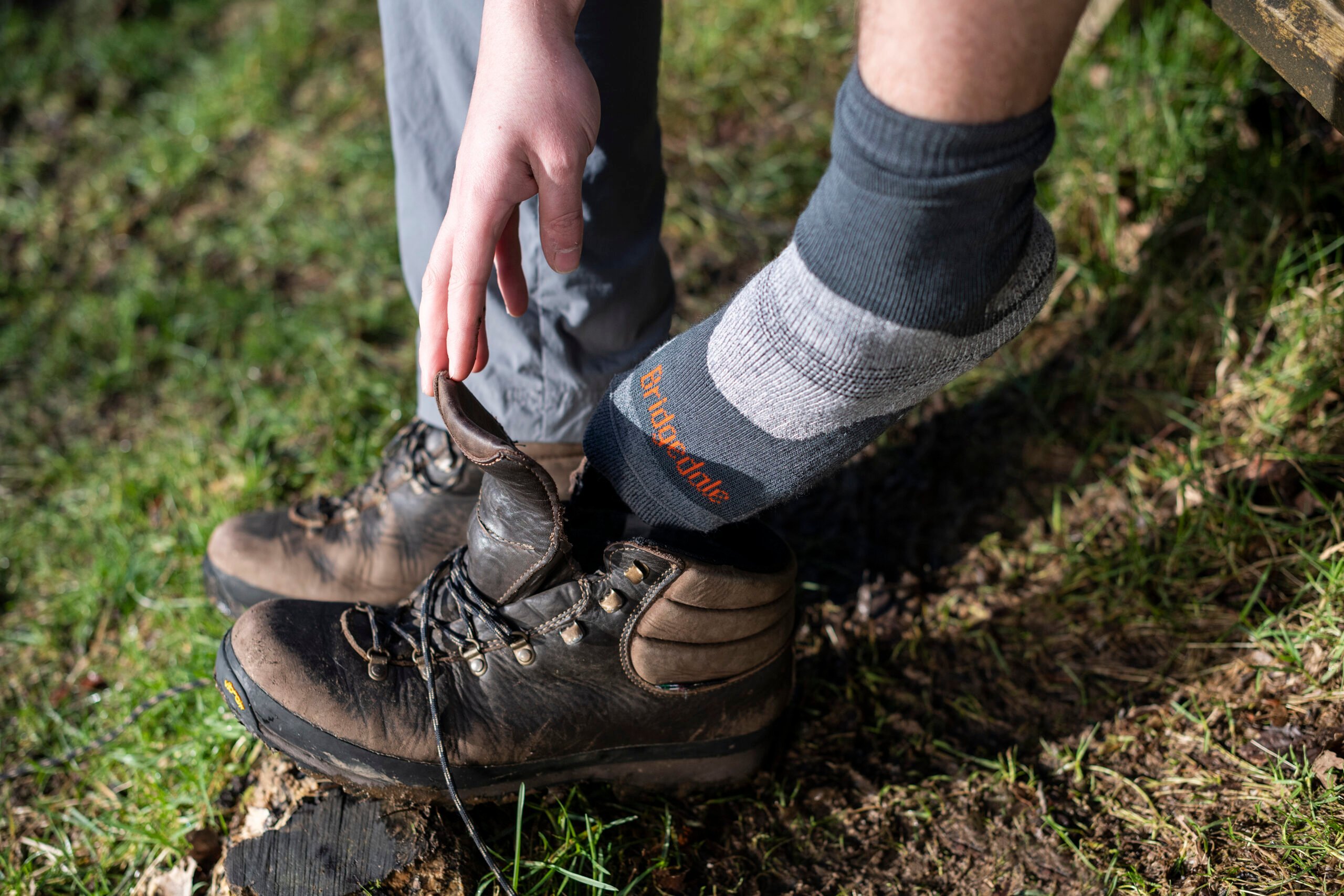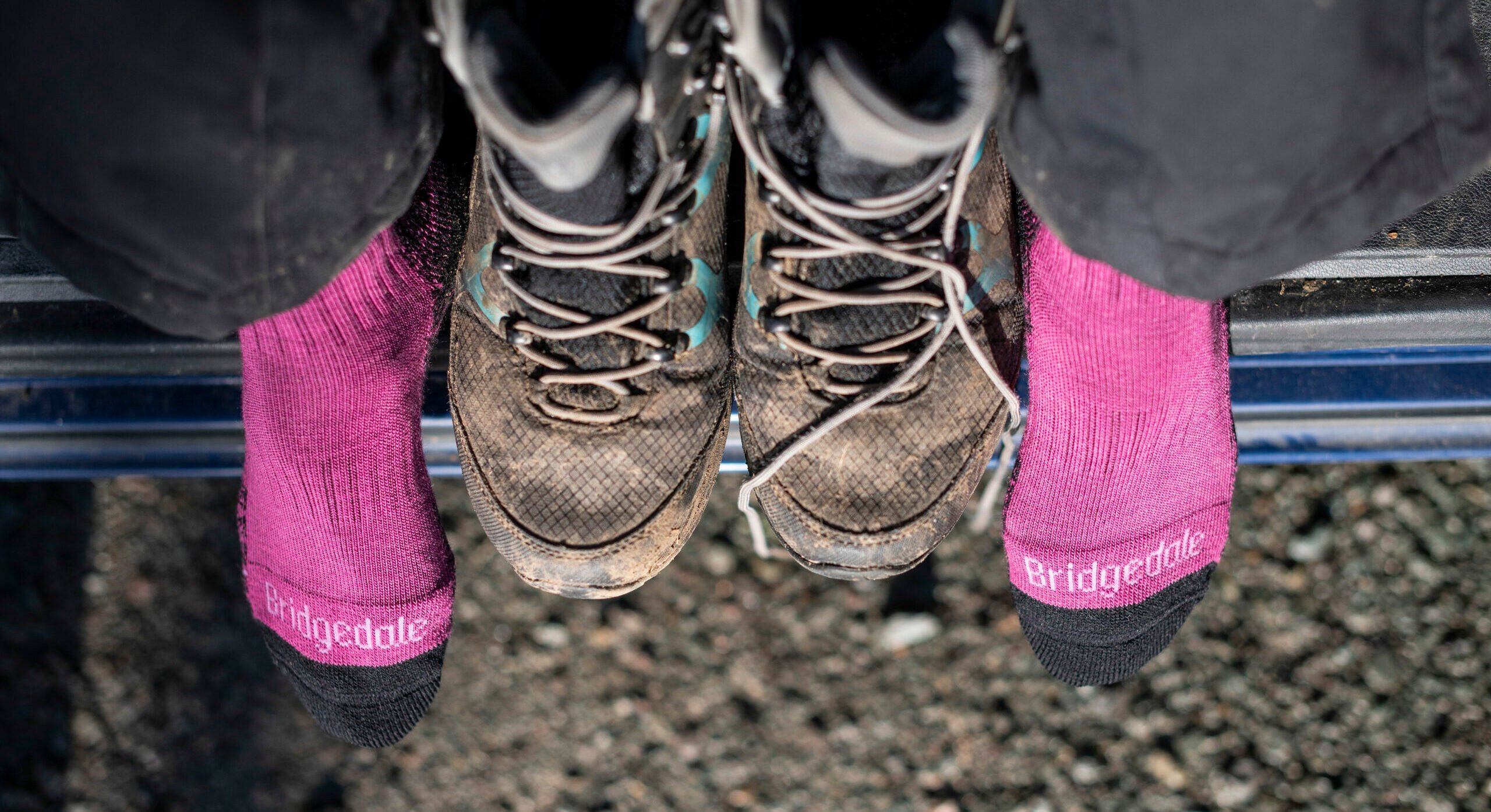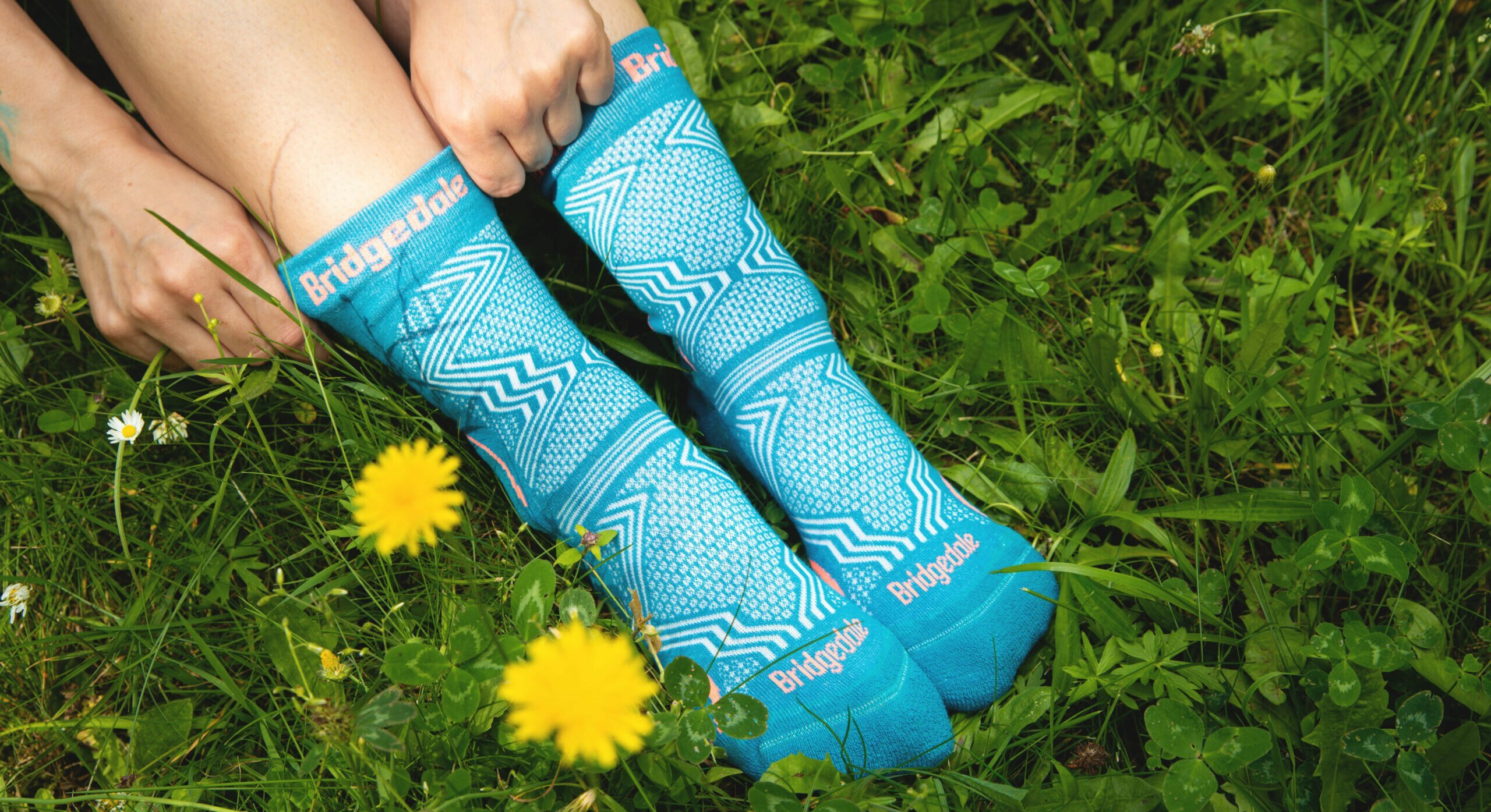Why your DofE walking socks matter more than you think
Why your DofE walking socks matter more than you think
When you’re tackling the great outdoors – whether it’s for your DofE expedition, a weekend adventure, or a challenging hike – the kit you choose can make or break your experience. Often, boots, waterproofs, and rucksacks steal the spotlight, but there’s one unsung hero that’s essential for every step you take…your socks.
The Bridgedale difference
We’re proud of our partnership with Bridgedale, and for good reason. Bridgedale has been keeping adventurers comfortable since the early 1980s – but their sock-making expertise goes back even further. Their Newtownards factory has been knitting socks since World War I, first supplying the army and later perfecting the art of outdoor performance.
Originally launching with just 12 products, Bridgedale now offers a comprehensive range of styles, engineered for the unpredictable UK weather and tough terrain. Every sock is hand-inspected to meet their high-quality standards, and they only source wool from suppliers who uphold the highest animal welfare standards.
Built with cutting-edge technology and decades of experience, Bridgedale socks are designed for hikers, explorers, and DofE participants who refuse to let uncomfortable feet slow them down – whatever the adventure.

Why the right socks matter for your DofE expedition
If you’ve ever suffered from blisters, damp feet, or cold toes, you’ll know just how much the right pair of socks can change your entire experience. They aren’t just an accessory, they’re a necessity. We’ve pulled together some of the most frequently asked questions from participants, along with our top reasons why Bridgedale socks deserve a spot on your packing list:
- Do different socks make a difference in preventing blisters and working with different footwear? Absolutely! The right walking socks can enhance comfort, reduce blisters, and support your feet based on your footwear. Expedition walking socks, like Bridgedale’s, feature extra padding, moisture-wicking materials, and durable designs to protect against blisters, fatigue, and the elements. Their strategic cushioning and seamless construction reduce friction while keeping feet dry—essential for preventing blisters. Regular socks just don’t offer the same breathability or support. Learn more about Bridgedale’s technologies here.
- What materials are best for expedition socks? Socks that have a blend of merino wool with synthetic fibres. Merino wool regulates temperature and wicks moisture, while synthetic fibres add durability and elasticity.
- Should I wear liner socks? They can be a game-changer. They provide extra warmth and reduce moisture buildup by wicking sweat away from your skin, further preventing blisters. They’re especially great for multi-day expeditions.
- How do I choose the right size sock? Socks should fit snugly without being too tight. If you’re between sizes, go for the larger size to avoid pressure points and allow for foot swelling during long hikes. Check out Bridgedale’s sizing guide for their socks.
- How should I care for my Bridgedale socks? Wash them inside out to maintain their cushioning and moisture-wicking properties. Avoid fabric softeners, as they reduce breathability, and air-dry them if possible. If using a tumble dryer, ensure it’s a low heat. Check out Bridgedale’s washing care
- How long do good walking socks last? With proper care, high-quality expedition socks can last for years. One of the main reasons we love Bridgedale socks so much is because they’re built to last – so much so that they come with a lifetime guarantee.
- Can I wear normal socks under my hiking socks for extra comfort? It’s better to use purpose-made liner socks instead of regular cotton socks. Cotton retains moisture, increasing the risk of blisters, while liners are designed to wick sweat away.
- How many pairs of socks should I take on an expedition? For a multi-day trip, at least two pairs of hiking socks and one or two pairs of liner socks. This allows you to rotate them, keeping your feet dry and fresh.

Explore comfortably, wherever your journey takes you
DofE expeditions are all about challenging yourself outside your comfort zone, but that doesn’t mean your feet should suffer! Staying warm, dry, and comfortable is key to enjoying the adventure…and let’s be honest, few things feel better than peeling off your boots at the end of a long day and still having blister-free feet.
Don’t let damp socks and sore spots hold you back. With Bridgedale, you can hike in total comfort, no matter the terrain. With a range of styles, thicknesses, and colours to choose from, there’s a perfect pair for every trek.
You can, quite literally, step up your expedition game – your feet will thank you!
Plus, with your DofE Card, you can save at least 10% on DofE recommended Bridgedale socks and all your expedition kit at our recommended retailers. So, gear up and get ready for your next adventure!






